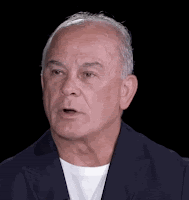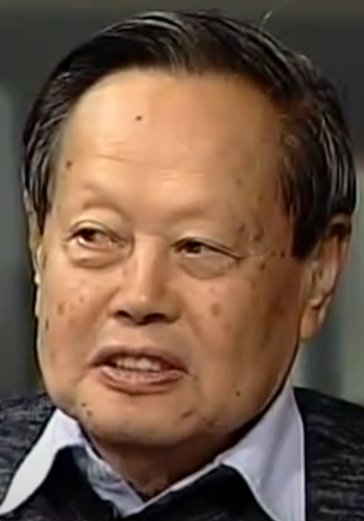You know what the fundamental physics is about? It is to ask how matter is put together. In the 19th century, people realized that everything is made of atoms and molecules. In the 20th century, we learned that molecules are made of atoms. Atoms are made of protons, electrons, and neutrons. But what are protons and neutrons made of? Now we know they are made up of quarks.
So, that is one aspect of what we do. Namely, we want to take matter apart and look at the constituents. But there's another part of the endeavor: how these parts are put together. The reason they are together is because there's a force between them. In daily language, we call it a force; in physics, we call it an interaction. So, the question is, what are the interactions between these constituents? The interaction of force is well-known already. Since Newton's time, there's gravitational force. Through the 19th century, we knew there were electric and magnetic forces. In the 20th century, we learned there are two additional kinds of forces. They are called nuclear forces, which are responsible for the atomic bomb, and weak forces, which are responsible for things like radioactivity.
So, there are now four types of forces. The question is, what is the precise nature of these four types? We know that gravity, through Newton, follows an inverse square law. You probably learned that in high school physics. One of the basic, fundamental questions we face is, how are these three other forces structured? They are not inverse square laws, but what are they? That's where the Yang-Mills Theory or gauge theory comes in. Gauge theory gives a principle that governs how these forces are structured mathematically and precisely.
Originally, in 1918 and 1919, stimulated by Einstein, Hermann Weyl, a great mathematician, proposed what is called gauge theory. He used that to describe electricity and magnetism, and that was successful, but it does not apply to the other two forces: nuclear forces and weak forces. What Mills and I did was generalize what Weyl did, and that became a general principle of forces, including gravity. That principle is now called the gauge principle. The gauge principle's detailed mathematical structure is what we wrote down in 1954.
At the time we wrote it down, nobody believed it was important, and we didn't know it was that important. But we said this is a beautiful idea, and the mathematical structure is very elegant. So, we published a paper about it. Then, 20 years later, various experiments showed that this was approximately the right direction. After struggling for another five years, it became clear that it was not just approximately right, but exactly right. So, that became something that is now the universally accepted principle of how these forces are formed.
1954? Yes.
How do you feel about the fact that 50 years later, something you created has been so important to your field?
Well, of course, I feel good about it. But I tell my students that the structure of everything often has a hidden beauty in it. If you can vaguely sense some of this beauty, do not let go. The reason that in 1954, Mills and I were able to do it is that it was not in agreement with the experiment, and nobody believed it. But we saw the beauty of the structure, so we wrote it down.
By the way, I should add the following, and this has something to do with Stony Brook. This theory was published, and gradually, people didn't believe it, but more and more people saw the beauty of it, so they began to work on it. It was only in the 1970s that it was confirmed by experiment. By the 1960s, there were not many papers, but every year there were 10 or 20 papers about it.
I came to Stony Brook in 1966, and one day, it must have been 1968 or 1969, I was giving a talk. I was giving a course on general relativity, a graduate course, and I wrote down on the blackboard a long formula—a famous formula called the Riemann tensor. Riemann was one of the greatest mathematicians of the 19th century. The Riemann tensor has something to do with Einstein's gravity theory. So, I copied down the long formula of the Riemann tensor on the blackboard. As I was copying it down, it suddenly flashed through my mind that the structure of this Riemann equation is very similar to the equation that Mills and I had written down in 1954. We didn't notice it at the time because we were not doing general relativity.
During that lecture, I found they were very similar. After the class, I went to my office and checked in detail. Sure enough, they were not just similar; they were exactly the same if you defined some quantities correctly. I was a bit excited, but I didn't understand it. So, I went to see Jim Simons. Jim Simons, as you know, was the young department chairman of mathematics at Stony Brook, and he was a great geometer. He knew Riemannian geometry very well.
I went to his office—we were still in that old red-brick building, both his office and mine. I said, "Jim, here's the Riemann formula that you are very familiar with. Some years ago, Mills and I wrote this formula. Look, they are very similar." He thought about it for a while and said, "Yes, yes, that's not strange. They are both fiber bundles."
I asked, "What's a fiber bundle?" He gave me a book written by a famous Princeton mathematician called Steenrod, called *Fiber Bundles*. I went back with the book, but it was impossible for me to understand. Mathematicians have a tendency to write very dry, very abrupt statements. They are precise, but there is no flesh to it, so it's all bones and impossible to understand. So, I didn't understand it. I went back to Jim and said, "This book is useless for physicists, but we want to understand what this fiber bundle business is about. Could you explain it to me?" He said, "Fiber bundles are a new thing in mathematics too, but earlier than in physics. Starting in the 1940s, there were already many papers in mathematics on fiber bundles, and it's now an important branch of geometry."
So, I asked, "Could you give us some lectures understandable to theoretical physicists?" He said yes, and he gave a series of lunch lectures, very informal. There were maybe 10 of us, faculty and graduate students of the Institute of Theoretical Physics here at Stony Brook. He must have talked for about a whole month, and that was very useful for us.
At the end of that, we decided to give him a gift for the series of lectures. We chipped in money and decided to buy something for him. I went to Irving Kraw, a mathematician I knew very well, and said, "Irving, we want to give Jim a gift. What should we buy?" He said, "Jim cannot spell, give him a dictionary." So, we bought a big dictionary and gave it to Jim. He told me recently that he's still using it.
What we learned from Jim in those lectures was very important, not only for me and for Stony Brook, but in fact, it launched a new trend. That came about this way: after I understood the gist of what the mathematicians were doing with fiber bundles, I realized that indeed both general relativity of Einstein and gauge theory were fiber bundles. I wrote a paper with T.T. Wu of Harvard immediately after that, in which we explained in detail the relationship between the mathematicians' ideas and terminology and the physicists' ideas and terminology. We made a little dictionary. The little dictionary had maybe 15 entries. On the left side were the physicists' terminology; on the right side were the mathematicians' terminology, and there was an exact correspondence.
We called it the dictionary, but there was one item which physicists used repeatedly. Its technical term is called "source." The idea of a source was due to Ampère, you know, the electric current—three amperes, five amperes? That was named after the great French physicist of the 19th century, Ampère. Now in physics, Ampère's idea of a source was a crucial concept. So, we had to have that in our dictionary on the physics side. But on the mathematics side, I went to ask Jim, "What do you call this?" He said, "We don't deal with this concept." So, we left it blank. It's a dictionary with maybe 15 entries on one side and 14 entries on the other side.
Then Isadore Singer from MIT, a distinguished mathematician, came to visit. I had known him, so I gave him a copy of our preprint. He looked at it, and there's this blank. He thought about it and decided that it's a very interesting concept and that they should deal with it. Somehow, in their 20 or 30 years of dealing with fiber bundles, they had never touched on this idea. So, he went to England immediately. He was a great collaborator of perhaps the greatest mathematician today in Great Britain, Michael Atiyah (now Sir Michael Atiyah; at that time, he was not a "Sir" yet). They looked at it and found that this concept, which they had never used but we had dealt with since Ampère, was most interesting. That became a new branch of mathematics.
What do they call it?
Well, there are many names. In particular, a student of Atiyah called Donaldson did the pioneering work in it, so it's called Donaldson theory. But all those are related to that blank spot.
In some sense, you know, in the first half of the 20th century, physics and mathematics were divorced. In earlier centuries, physics and mathematics were in close collaboration, but in the first half of the 20th century, the mathematicians became more and more abstract. They were very happy. In fact, one of them wrote an article saying that the greatest achievement of 20th-century mathematics was that it finally liberated itself from the shackles of physics. That was by a famous mathematician. But with this fiber bundle business, the mathematicians and the physicists are now coming together again. If you want to say, how did that coming together come about? I would say it has something to do with me and Jim and that blank spot in that dictionary and with Stony Brook. So, we are very happy that Jim continued to be interested in physics and math. You know, now he's a billionaire, and he just announced he would give $25 million to Stony Brook.





